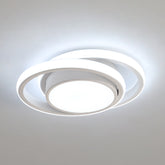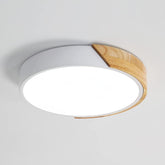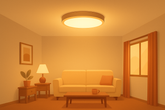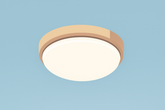What Is a Diffused Ceiling Light? Principle, Advantages & Difference from Traditional Ceiling Lights
1. The Core Principle of Diffused Lighting
The key to a diffused ceiling light lies in how the light travels. Instead of emitting harsh direct light, it uses a dual-layer optical system—typically a light guide plate paired with a diffusion panel, or a frosted cover combined with a micro-prism structure. These optical layers allow the LED light to be refracted and scattered multiple times before reaching the room. The result is a smooth, even, and soft illumination, similar to sunlight passing through thin clouds—bright but never dazzling.
2. Key Differences Compared with Traditional Ceiling Lights
Traditional ceiling lights often produce direct and concentrated light, which can easily create glare and bright spots. A diffused ceiling light, however, offers a much smoother lighting effect, with no hotspots or harsh beams, even when viewed directly.
In terms of eye comfort, the diffused design significantly reduces glare and can achieve UGR ≤ 19, meeting professional anti-glare standards used in offices and homes. This helps reduce eye strain, dryness, and headaches — especially beneficial for children, seniors, and sensitive users.
For room ambience, diffused lighting eliminates the common issue of “bright center, dark corners” seen with standard ceiling lights. The illumination becomes clear, open, and evenly distributed, creating a warm and spacious atmosphere.
Structurally, the difference is also significant: – Diffused ceiling lights use a light guide + diffusion panel, requiring precise optical engineering to produce uniform light. – Traditional ceiling lights generally rely on a single acrylic or glass shade, allowing direct light output that cannot properly soften or balance the illumination.
In summary:
A traditional ceiling light works like a flashlight — direct and harsh. A diffused ceiling light works like a soft-light box — smooth and uniform. Its greatest strength lies in delivering softness and consistency.














